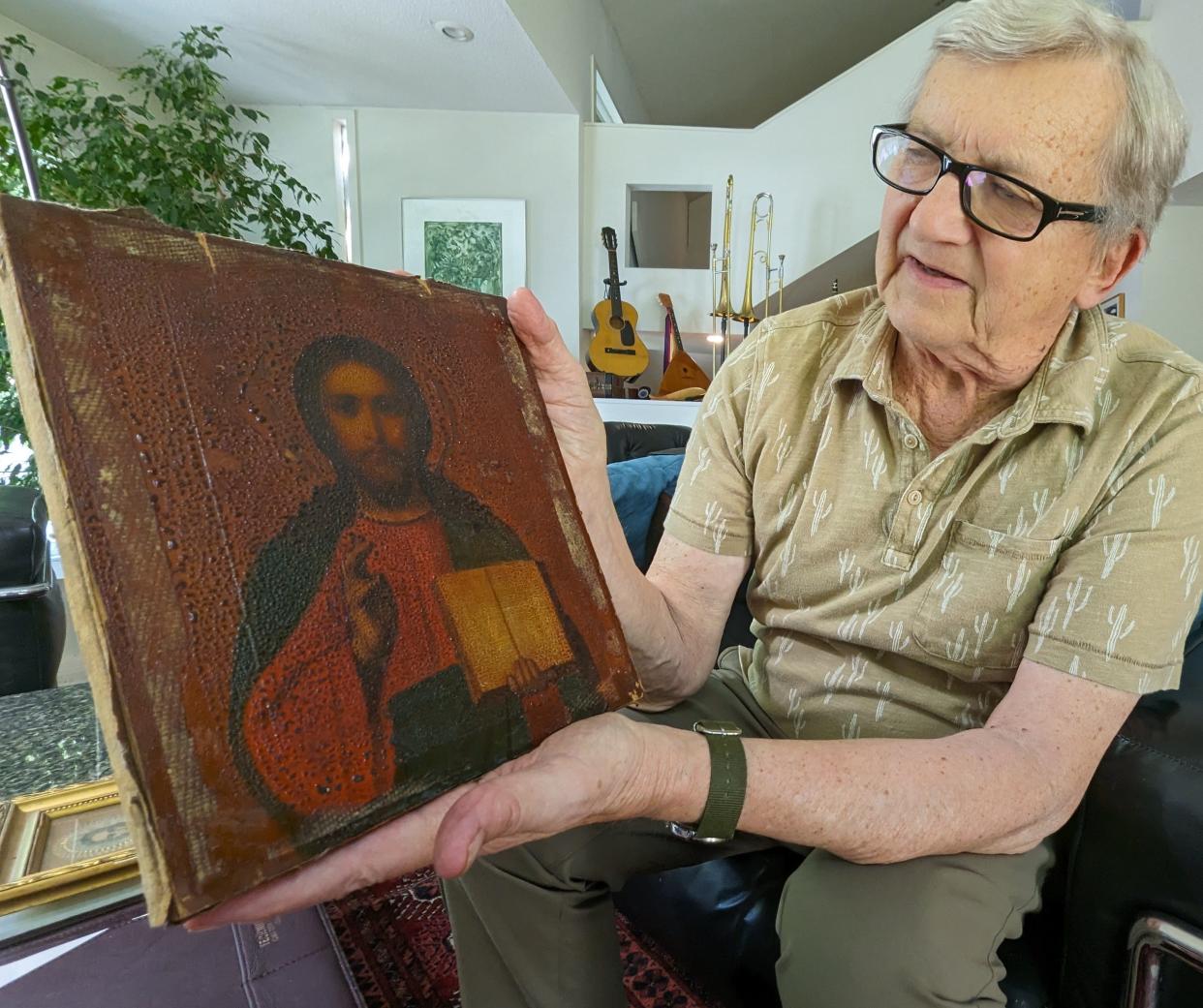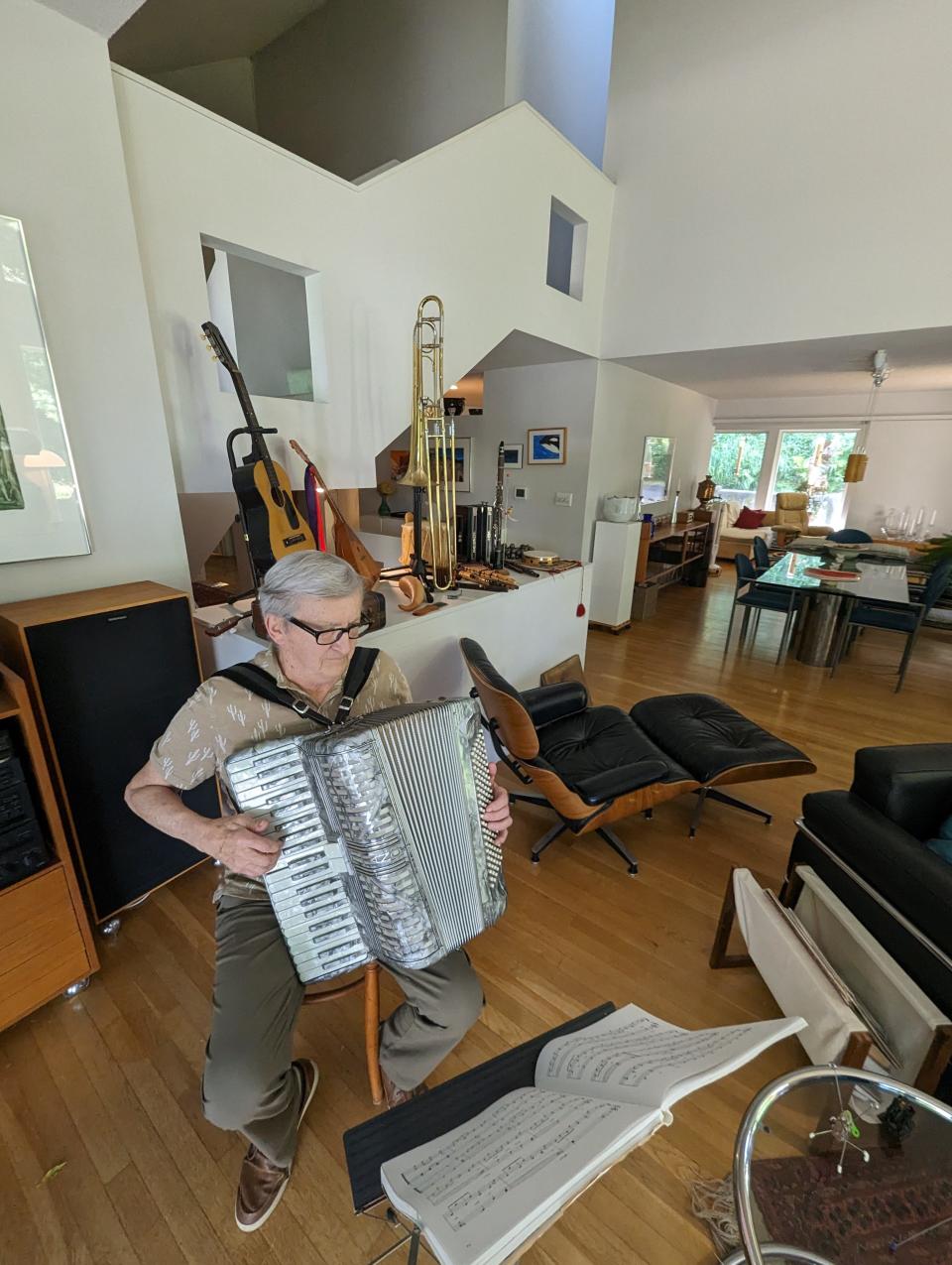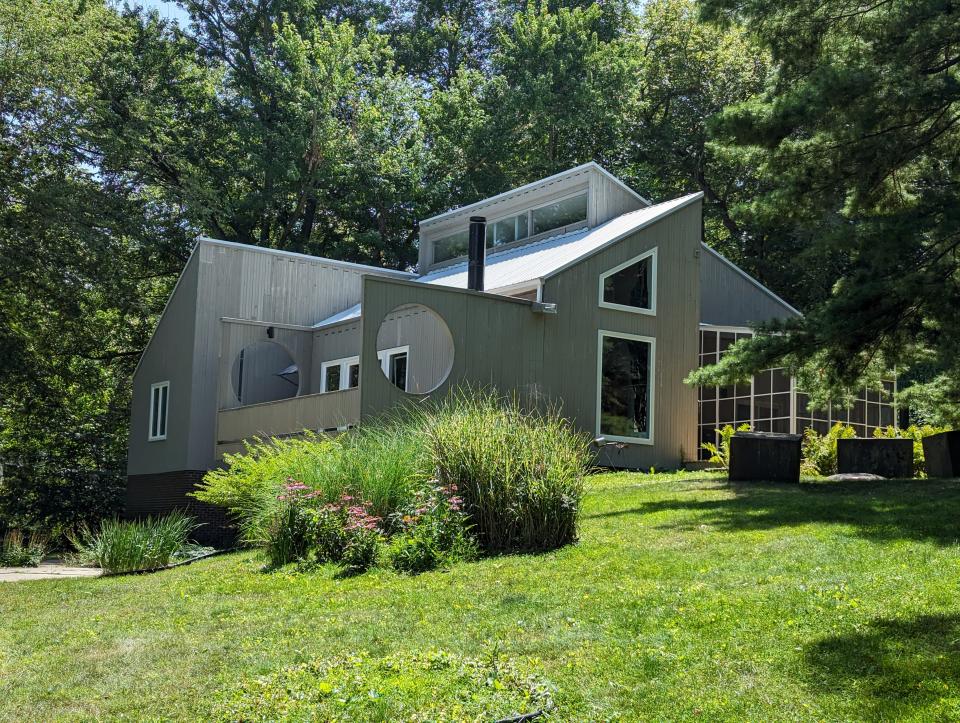Iowa City architect reflects on his childhood experience with Germany's invasion of Poland

Bill Nowysz of Iowa City was a small child growing up in a tiny village in eastern Poland when his mother suddenly rushed him to an upstairs room and hid him under a bear skin rug.
It was a terrible time, more than 80 years ago in pre-World War II Europe, with the Germans invading Poland from the west and the Russians from the east. His father was a Russian Orthodox priest, a church favored by the Tzar in the past, but now such clerics were targets of the anti-church Russian Bolsheviks who were taking over.
“I can still remember what that was like,” he said. “The smell of the rug.”
What he did not know was that while he hid, Soviet partisans were outside killing his father in the parish house garden.
“He was hacked to death with a sword,” Nowysz told me.
It was the tragic beginning of several years of fear and horror for the young Pole, his mother, and the man she later married.
Mother and son fled to a nearby village and were sheltered by another priest who was their friend.
The Nazis invade
The German occupation was the family's next obstacle. Nowysz saw Jews sent to work camps, and those who resisted were murdered and buried next to the home where he was staying. Some bodies were also burned, using stacks of old railroad ties for fuel.
In 1941, German soldiers were assigned to live in homes in the area. One day, young Nowysz and his friends sneaked into a soldier's room to examine their weapons and accidentally shot a hole in the ceiling.
“It scared the hell out of us,” Nowysz said, “plus we all got a whipping, and the soldiers were mad because they had to account for every bullet issued.”
Later, the village families packed their belongings onto horse-drawn wagons and fled to escape the fighting.
“I remember riding through the countryside on a beautiful Persian rug that covered the wagon,” Nowysz said. “One fond memory was camping with gypsies for the night -- the fires, the music and beautiful dancing.”
They settled in a displacement camp in Bavaria, where Hitler Youth beat Nowysz with sunflower stalks pulled from a garden because his Russian accent exposed him as an outsider. He learned German in a hurry, he said.
After the war, Nowysz remembers scavenging for radios, batteries, turn signals and ashtrays from the scores of abandoned military vehicles. They became the toys he hid under his bed.
Rebuilding a family
Relocated later to an abandoned German military camp, the family was told that an Idaho potato farmer would sponsor them in America. Returning to their homeland in Poland was not an option since Russians had overtaken his mother’s inherited land and were shipping Poles to Siberian work camps.

Nowysz remembers a cold and stormy 14-day crossing to New York City on a terribly overcrowded American ship. A sympathetic sailor took pity on him and gave him a Navy peacoat, which he still has today. When the Idaho farmer failed to show up for their arrival, Nowysz's mother called friends in Muscatine. They had emigrated two years earlier and sent money for a bus ticket. Nowysz arrived in Iowa at age 14, speaking Russian, Polish and German but very little English. Still, in his words, “I was happy as hell to be in America.”
What followed was an immigrant success story.
Growing roots in Iowa
Nowysz graduated from Muscatine High, received his degree in architecture from the University of Michigan, and settled in Iowa City in 1969 where he has been a successful architect here ever since. He still takes on a few projects at age 86.
He and his wife Margaret, who died in 1988, raised two children − a daughter now in Los Angeles and a son in Des Moines. Nowysz still lives in the architecturally advanced home he designed and built here in the 1970s. He also designed his son’s home in Des Moines.
“I love this country,” he said. “It gave me an opportunity to become something.
Ukraine's conflict has eerie similarities
Russia's invasion and subsequent war in Ukraine remind Nowysz too much of his distant past.
“The same Russians who chased us out are now chasing out the Ukrainians,” he said. “It was terrible back then for us. Everybody was getting out just like the Ukrainians are getting out now. If you stayed, you were going to get killed.”

He said that being caught between two invading armies caused years of flight and anguish for his family.
“We chose to be with the Germans,” Nowysz said, “because the Russians were way more cruel and would send you to Siberia. Just like in Ukraine, they came in and said, ‘You don’t belong here. This is our land.’ And they seized everything.”
“And now that I am retired,” he continued, “I look back and wonder why history is repeating itself.”
Richard Hakes is a freelance writer for the Iowa City Press-Citizen.
This article originally appeared on Ames Tribune: Hakes: Iowa City architect reflects on experience as a WWII refugee

